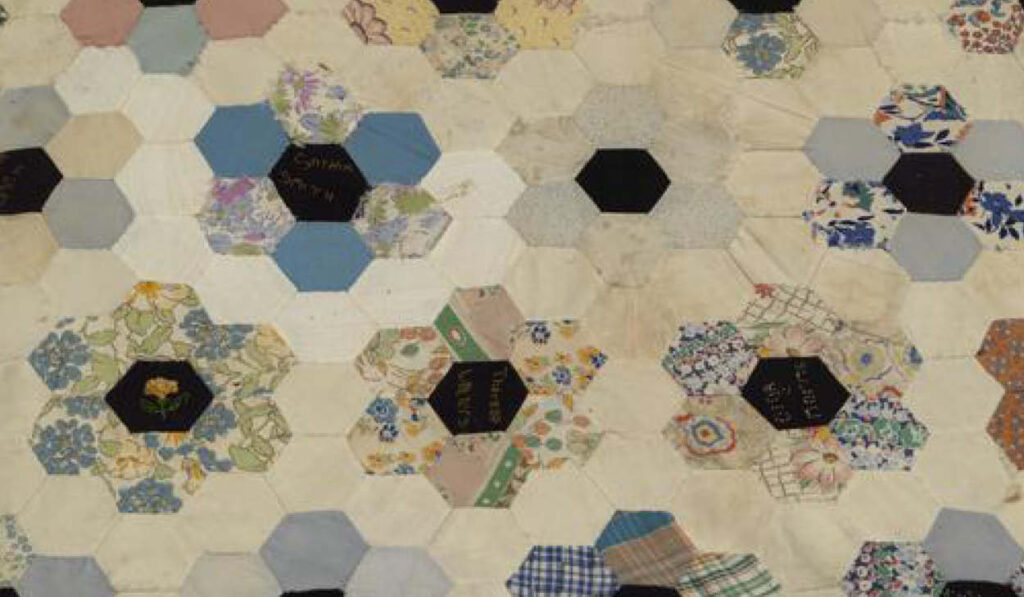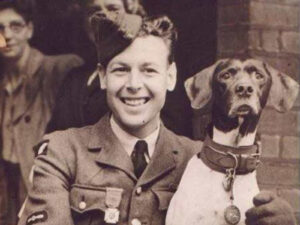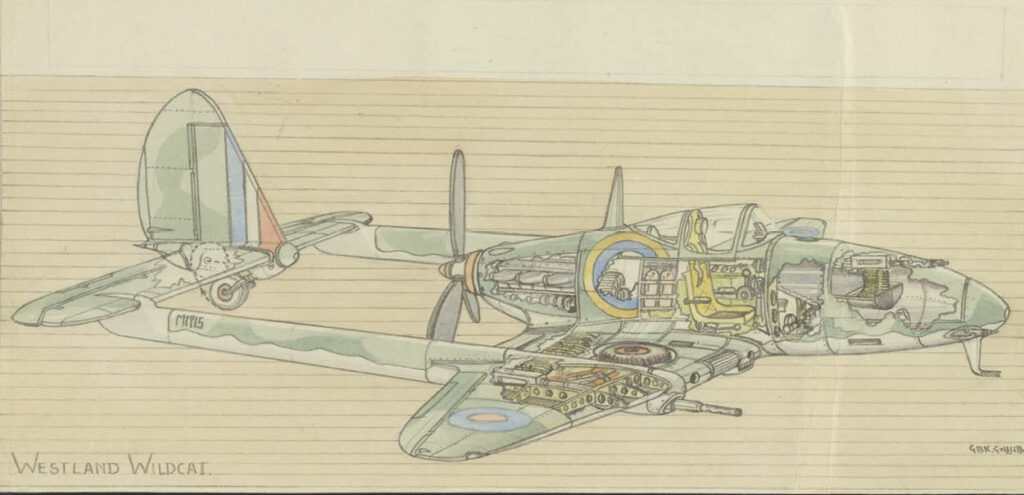Our new exhibition, ‘Great Escapes: Remarkable Second World War Captives’ draws on The National Archives’ vast collections of wartime era documents and photographs – featuring not only the iconic stories that you may have heard of, but many stories of survival that have rarely been told.
Here are some highlights of just a few of the fascinating records and the stories behind them that you can see at the exhibition:
1. Quiltmaking

A quilt c. 1943 made up of hexagonal patches produced by Girl Guides in Changi Camp © IWM EPH 9206
Nine-year-old Olga Morris and her family lived in Malaya before the Japanese invasion and though they try to make their escape by ship, are captured in Singapore and interned in Changi Camp. While enduring terrible conditions, Olga and other Girl Guides occupy themselves by producing a quilt, in secret, as a birthday present for Elizabeth Ennis, the local Girl Guides captain. See the quilt and Olga’s story in the exhibition.
2. Animal love

Photograph of Judy and Frank, on being awarded the Dickin Medal on 2 May 1946. Photograph credit: Topfoto
Leading Aircraftman Frank Williams came across a Royal Naval ship’s dog, a Pointer named Judy in Gloegoer Camp in Indonesia. There they developed a strong bond, with Frank devoting his time to take care of Judy. Judy became the only animal to be given the official status of prisoner of war.
See Judy’s bronze PDSA (People’s Dispensary for Sick Animals) Dicken medal, the equivalent of the Victoria Cross for Valour for animals and her collar, in the exhibition, loaned from IWM.
3. Fake intelligence

Image of the ‘Westland Wildcat’, an imaginary British plane, hand-drawn by Guy Griffiths, 1945. Catalogue reference: WO 208/5440
Guy ‘Griff’ Griffiths is a Royal Marine pilot and one of the first naval officers to be captured. He found distraction from captivity in dreaming up a scheme for feeding misleading intelligence to the German authorities whilst imprisoned in Dulag Luft – creating sketches of fake British aircraft which he leaves around the camp for guards to find.
4. Captive hymns
Margaret Dryburgh is interned in Palembang Camp in 1942 and finds respite from life as an internee by forming a women’s choir and vocal orchestra. Members hum sounds to mimic orchestral instruments, and sing a variety of hymns, which helps with morale in the camp.
5. Sketching whilst captive
Ronald Searle is captured when Singapore falls to the Japanese and is initially sent to Changi POW Camp before moving to the Thai jungle to work on the building of the railway there. Despite successive illnesses and terrible conditions, he finds solace in secretly drawing, documenting the cruelty of his captors and life as a prisoner. Often sketching on scraps of paper found or given to him, around 300 of his drawings survive the war. You can see a selection of sketches from his notebooks together with a self portrait, from 1943 displayed in the exhibition.
You can visit the exhibition at The National Archives from 2 February to 21 July, Tuesday to Sunday. Plan your visit.
Read about the iconic escape stories featured in the exhibition.
Return to the homepage for the Great Escapes season.
